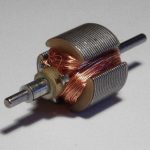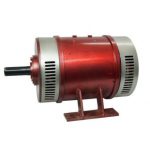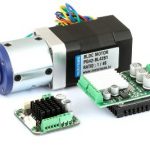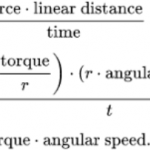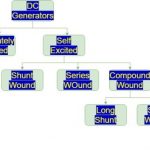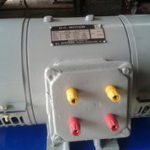The rotor was invented in the early 1800s and it was discovered by the naval officers R. P. C. Spengler and Theo A. van Hengel. Earlier it was used in Rotor dynamics for the encryption of files especially used in cryptography. The invention of this type is also supported by Gustaf de Laval who is working for the development of turbine machinery. This type was supposed to be called Laval type as per his name Gustaf de Laval. In this article, we shall … [Read more...]
DC Shunt Generator – Working, Load Test & Magnetisation Characteristics
Early 1830 Faraday worked on the process that is related to electromagnetic fields. He discovered a theory that is basic behind the working of a generator. Later several discoveries have been done that led to the invention of some other generators, those are the shunt, series, and compound type. However, all these types work on the same principle I,e the Faraday's law of electromagnetic induction. So, the invention of the magnetic laws by Faraday behind … [Read more...]
How to Make a DC Motor – How a Generator is Made from it
The electric motors first developed were of electrostatic in nature. This type of motor is first invented by Scott scientist Andrew Gordon and Benjamin Franklin in the early 1740s. Later many investigations have been done to improve the performance of the electric motor. In 1821 Faraday invented the rotator motion by the induction principle. Later this rotator motion is considered to be the principle of electric motors. In this article, we shall discuss … [Read more...]
DC Series Motor – Operation and Characteristics
In the early 1870s, the electric motors used in traction did not give profitable results. But the invention of the series motor had brought much convenience in this field. Due to its performance that it can produce high starting torque. This advantage of producing high starting torque has also used the railways where the locomotives can be easily moved forward. In time, a process has also been discovered to use the technology regenerating power by the use … [Read more...]
Direct and Indirect Methods of Testing DC Machines
In the early 1880s Oslen proposed to test the machine to invent some new and improvements in machines. In his proposal, he highlighted the difficulties he faced running any machine. Accordingly, he also proposed certain measures to be taken to avoid such difficulties. He suggested testing the machines to improve their performance and working difficulties. So, this is the reason why a machine is tested by different methods to know its behavior. There are … [Read more...]
PMDC motor – Design, Operation & Advantages
The first motor I,e permanent magnet was first invented by Hungarian scientist Istvan. He invented the first PMDC that works on the usage of permanent magnetic field interaction. But these motors faced several constraints to work practically. In 1882, John Urquhart suggested using electromagnets instead of permanent magnets. Early twentieth-century, the permanent magnets secured much importance because of the invention of these magnets made of high-quality … [Read more...]
BLDC Motor – Types, Operation & Purposes
Though there were brushed motors before the design of brushless motors. The first brushed DC motor was invented by a German scientist Ernst Werner Von Siemens in 1856. The challenges involved in the usage of brushed motors are high as it is limited effective and requires higher sustenance. Keeping these challenges in understanding a brushless type has been invented by T.G. Wilson and P.H. Trickey in 1962. The contrivance of this brushless motor led to the … [Read more...]
Derive the Torque and Power Equation of a DC Motor
The motor was invented by Michael Faraday who discovered the laws of electromagnetic induction. Actually, the invention began with the discovery of Direct current. This invention led to conduct detailed experiments for the invention of the motor. Earlier direct current was developed in 1800 and further investigations have been made for better utilization of DC. This DC helped in investigating the current supplied to the machine to operate. At the same … [Read more...]
DC Generators : Working, Types & Its Applications
Generally, the generator is an electrical device and the designing of this device can be done by observing the dynamo working principle. Thus, we can say that the generator was progressed from the dynamo invention. The dynamo working is also the same as that of a generator and it was discovered by Hippolyte Pixii in the 1830s. In fact, in a dynamo, the AC (alternating current) is supplied to the armature winding and it is converted through a commutator. … [Read more...]
DC Shunt Motor – Characteristics & Load Test
The very initial investigations led to the design of the machine are done by Andrew Gordon a Scottish scientist and Benjamin Franklin in the initial 1740s. This discovery required the usage of current and voltage for its development. Later, the contraption of battery by volta in 1799 made possible the design. This also required the cooperation of forces to produce a rotating captivating field. The cooperation of two forces is made possible to create a … [Read more...]
